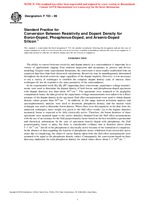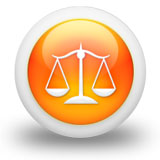Potrebujeme váš súhlas na využitie jednotlivých dát, aby sa vám okrem iného mohli ukazovať informácie týkajúce sa vašich záujmov. Súhlas udelíte kliknutím na tlačidlo „OK“.
ASTM F723-99
Standard Practice for Conversion Between Resistivity and Dopant Density for Boron-Doped, Phosphorus-Doped, and Arsenic-Doped Silicon (Withdrawn 2003)
Automaticky preložený názov:
Štandardná prax pre konverziu medzi odporu a mazadlá na formy Hustota bóru dopované , fosfor dopoval , a Arsen - dopoval kremíka ( Withdrawn 2003 )
NORMA vydaná dňa 10.6.1999
Informácie o norme:
Označenie normy: ASTM F723-99
Poznámka: NEPLATNÁ
Dátum vydania normy: 10.6.1999
Kód tovaru: NS-56257
Počet strán: 15
Približná hmotnosť: 45 g (0.10 libier)
Krajina: Americká technická norma
Kategória: Technické normy ASTM
Anotácia textu normy ASTM F723-99 :
Keywords:
boron, dopant density, phosphorus, resistivity, silicon, ICS Number Code 29.045 (Semiconducting materials)
Doplňujúce informácie
| 1. Scope |
|
This standard was transferred to SEMI (www.semi.org) May 2003 1.1 This practice describes a conversion between dopant density and resistivity for boron- and phosphorus-doped single crystal silicon at 23°C. The conversions are based primarily on the data of Thurber et al (1,2,3) taken on bulk single crystal silicon having dopant density values in the range from 3 X 10 cm to 1 X 10 cm for phosphorus-doped silicon and in the range from 10 cm to 1 X 10 cm for boron-doped silicon. The phosphorus data base was supplemented in the following manner:two bulk specimen data points of Esaki and Miyahara (4) and one diffused specimen data point of Fair and Tsai (5) were used to extend the data base above 10 cm , and an imaginary point was added at 10 cm to improve the quality of the conversion for low dopant density values. 1.2 The self consistency of the conversion (resistivity to dopant density and dopant density to resistivity) (see Appendix X1) is within 3% for boron from 0.0001 to 10 000 [omega][dot]cm, (10 to 10 cm ) and within 4.5% for phosphorus from 0.0002 to 4000 [omega][dot]cm (10 to 5 X 10 cm ). This error increases rapidly if the phosphorus conversions are used for densities above 5 X 10 cm . 1.3 These conversions are based upon boron and phosphorus data. They may be extended to other dopants in silicon that have similar activation energies; although the accuracy of conversions for other dopants has not been established, it is expected that the phosphorus data would be satisfactory for use with arsenic and antimony, except when approaching solid solubility. See 5.3. 1.4 These conversions are between resistivity and dopant density and should not be confused with conversions between resistivity and carrier density or with mobility relations. Note 1-The commonly used conversion between resistivity and dopant density compiled by Irvin (6) is compared with this conversion in Appendix X2. In this compilation, Irvin used the term "impurity concentration" instead of the term "dopant density."1.5 This standard does not purport to address all of the safety concerns, if any, associated with its use. It is the responsibility of the user of this standard to establish appropriate safety and health practices and determine the applicability of regulatory limitations prior to use. |
Odporúčame:
Aktualizácia zákonov
Chcete mať istotu o platnosti využívaných predpisov?
Ponúkame Vám riešenie, aby ste mohli používať stále platné (aktuálne) legislatívne predpisy
Chcete vedieť viac informácií ? Pozrite sa na túto stránku.




 Cookies
Cookies
